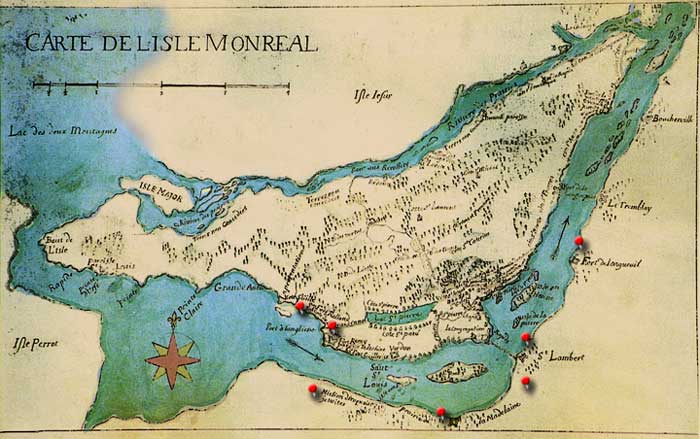La Grande Paix de Montréal .

Great Peace.
They had battled for over 50 years, but the Iroquois could see the rapid growth of the British colonies become a threat to their lands and felt it prudent to come to terms with the French who were less aggressive colonizing. In a move that was highly unpopular with the British, 40 chiefs met with Louis-Hector de Callière governor of New France, in a field outside of Montréal to broker an agreement. The Great Peace of Montréal was signed 4 August 1701.
A Rule-Breaker.
For Clément there was a separate peace of sorts. He had come to be acquainted with the beautiful daughter of Pierre Roy, a farmer, and his wife Catherine Ducharme of Saint-Lambert. A man of Clément's rank, by custom and by command of the king, was to marry a woman of some social standing whose family could provide a reasonable dowry. Though in Canada individuals could climb the social ladder more readily than in Europe, there still existed a line separating the classes. And the lovely Marie Roy stood on the other side of it. It seemed futile to ask for permission since her family could not produce the dowry. With peace now secured, at least for a time, Clement's next move was to defy the rules of his society to marry the woman he loved. He would pay a price for his defiance.
Banns of marriage, a public announcement of an impending wedding, were announced on three consecutive Sundays to allow time for any objections or concerns about the marriage to be brought to the attention of the priest. By receiving a written dispensation of the banns, Clément, 38, and Marie, 19, were able to marry in relative secrecy, thus not alerting his commandors of his action. It was quite a scandal.
Cassé.
Governor Callière was duty bound to take action once the news of the marriage came to light and demoted Clément to a common soldier on 6 May 1702. However, in his letter to the King on 4 November 1702 his discomfort with the situation was clear:
Rétabli.
Communication with the Crown required patience. Written on parchment using a quill pen [often a goose feather] dipped into an inkwell, the letter had to wait for a ship to carry it across the Atlantic to France where it would make its way to the King's court by horse-drawn carriage. The reply made the same journey in reverse. The ships, of course, did not sail in the cold winter months. On 1 June 1703 Clément Lériger LaPlante's rank was restored to ensign.
- Dictionnaire National des Canadiens-Francais", tome III
- Descriptive record - Private Archives and Colonial Records; Item part of: Fonds des Colonies; [documents textuels] 1702, mai, 6; Series B. Lettres envoyées
- Our French Canadian Ancestors, Laforest, Thomas J. and Jeffery M. LaRochelle, (III-rev)127 – 134, Palm Harbor, Florida: The Lisi Press, 1993
- REGISTRE DE LAPRAIRIE, 1700, La-Nativité-de-la-Bienheureuse-Vierge-Marie-de-Laprairie, (II):48
- Dictionnaire National des Canadiens-Francais", tome III
- Jette, Rene, Dictionnaire généalogique des familles du Quebec des origines à 1730, p719
